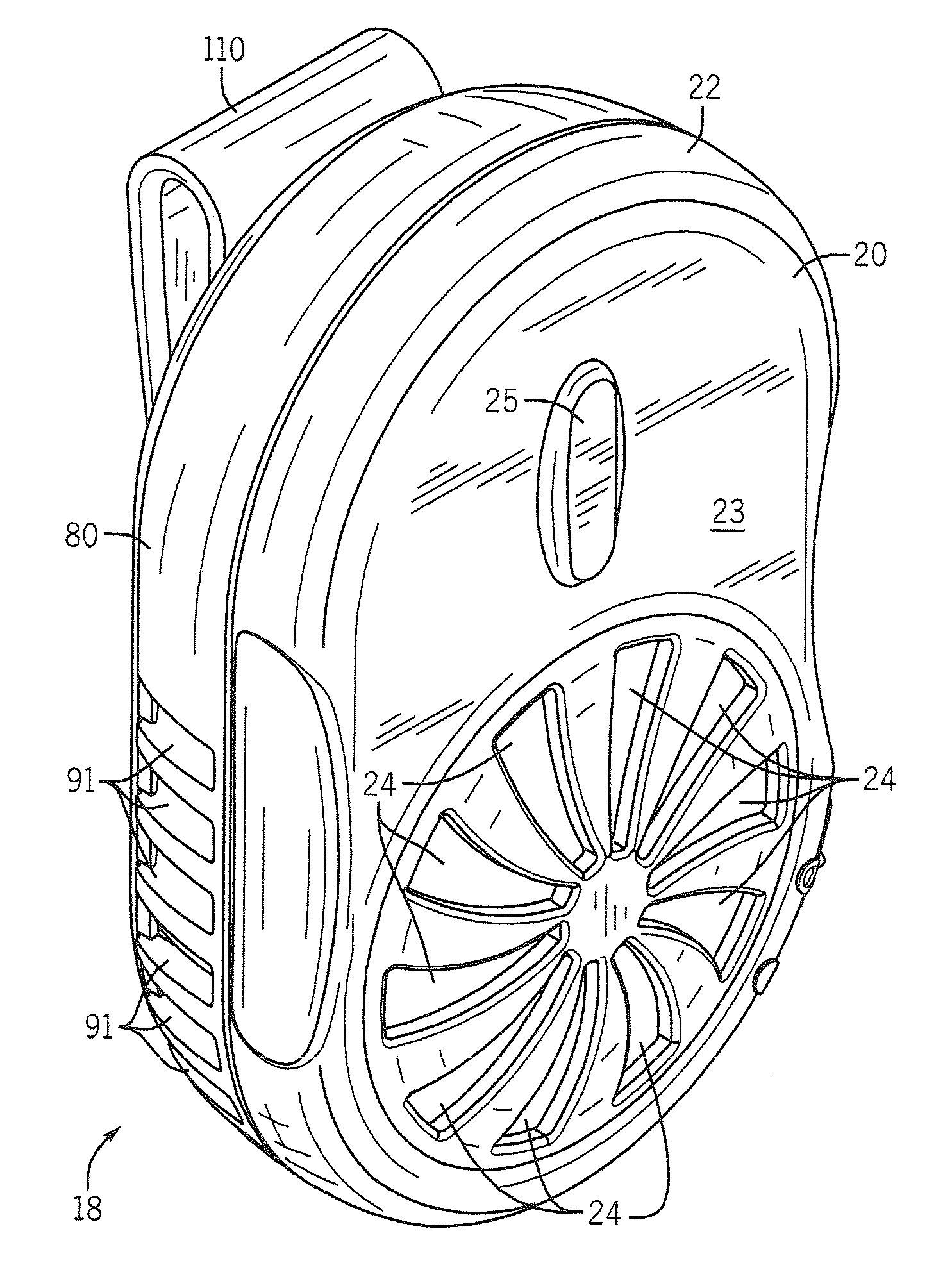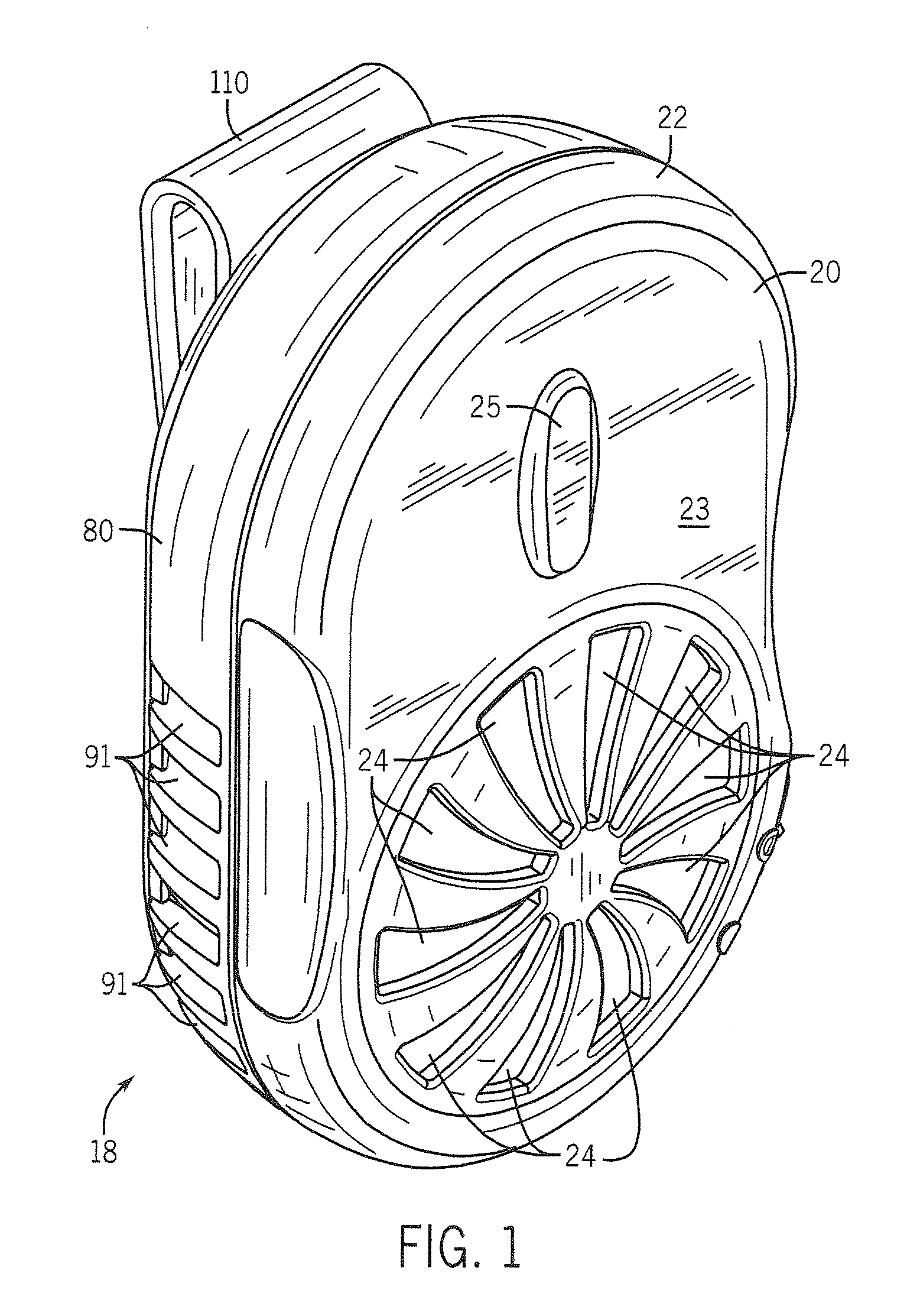Wearable Chemical Dispenser
a dispenser and chemical technology, applied in the field of wearable devices, can solve the problems of reducing the efficiency of chemical consumption, so as to achieve the effect of reducing the cost of chemical consumption, and reducing the waste of actives
- Summary
- Abstract
- Description
- Claims
- Application Information
AI Technical Summary
Benefits of technology
Problems solved by technology
Method used
Image
Examples
Embodiment Construction
[0059]A preferred example wearable chemical dispenser 18 is shown in FIGS. 1-11. The wearable chemical dispenser 18 includes a top housing section 20 having a generally oblong side wall 22 that extends from a top wall 23. In use, the wall 23 is typically frontally disposed and acts as a lid. A plurality of spaced apart apertures 24 are radially arranged in the top wall 23 of the top housing section 20. The apertures 24 provide an inlet for permitting air to enter into an interior space of the wearable chemical dispenser 18. A tab 26 provides a means to grasp the top housing section 20 when opening the top housing section 20.
[0060]The wearable chemical dispenser 18 also includes a slide cover 28 having an on-off button 29, openings 31, and a cam projection 32. A fastener 34 (see FIG. 6) mounts the slide cover 28 to the top housing section 20 such that the slide cover 28 may rotate with respect to the top housing section 20 when a user moves the on-off button 29 along the side wall 22...
PUM
 Login to View More
Login to View More Abstract
Description
Claims
Application Information
 Login to View More
Login to View More - R&D
- Intellectual Property
- Life Sciences
- Materials
- Tech Scout
- Unparalleled Data Quality
- Higher Quality Content
- 60% Fewer Hallucinations
Browse by: Latest US Patents, China's latest patents, Technical Efficacy Thesaurus, Application Domain, Technology Topic, Popular Technical Reports.
© 2025 PatSnap. All rights reserved.Legal|Privacy policy|Modern Slavery Act Transparency Statement|Sitemap|About US| Contact US: help@patsnap.com



